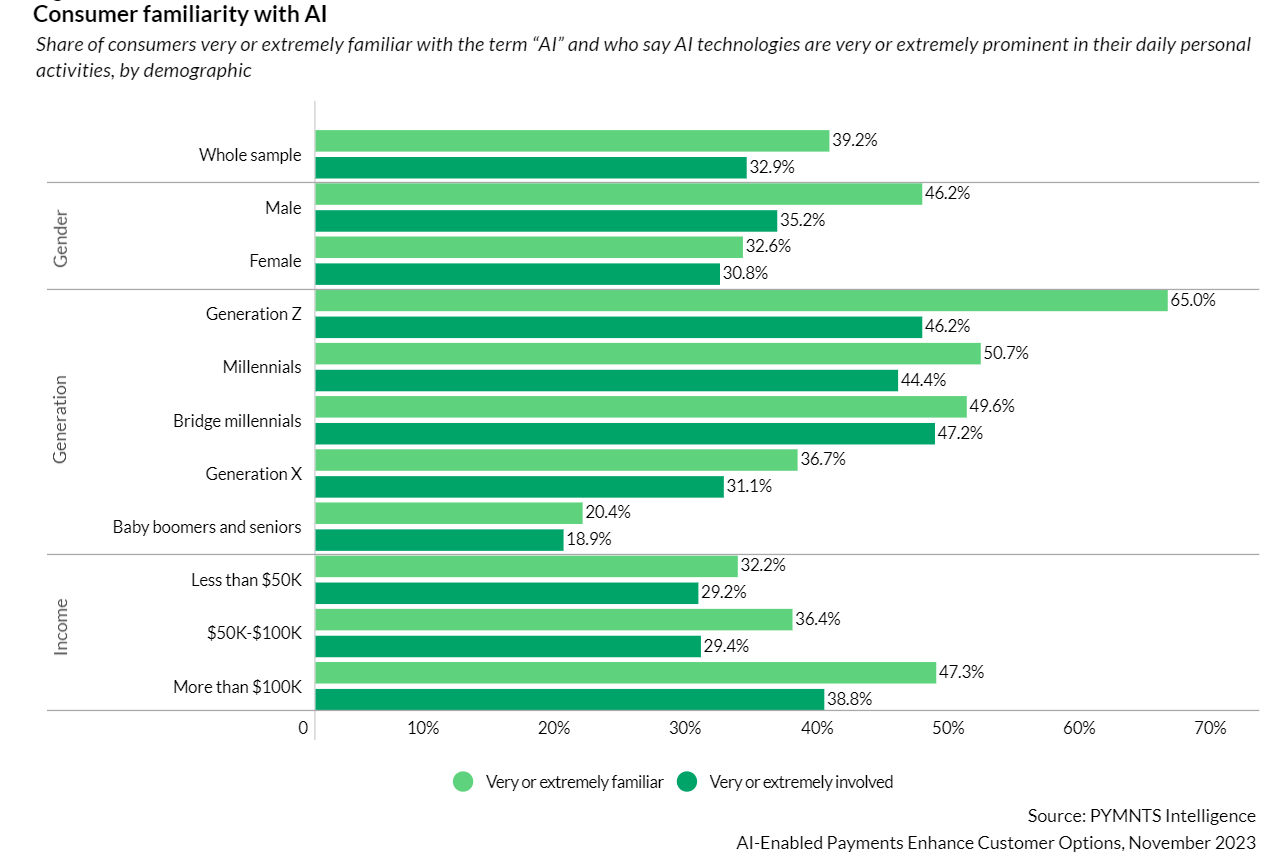More Men Than Women See AI Playing ‘Very Prominent’ Role in Daily Personal Activities

Artificial intelligence (AI)-enabled experiences are gaining popularity among consumers, transforming the way they pay for goods and services. In fact, a significant share of consumers now integrate AI into their regular routines, with 1 in 3 consumers saying AI technologies are already highly intertwined in their daily personal activities.
When it comes to familiarity with the term “AI,” there are significant differences across gender, generations and income levels.
For example, a higher percentage of men — 46% — consider themselves very or extremely familiar with AI compared to 33% of women. Similarly, although the margin is smaller, a higher percentage of men (35%) than women (about 31%) acknowledge AI’s significant role in their daily personal activities.
These are some of the conclusions drawn from “AI-Enabled Payments Enhance Customer Options,” a report by PYMNTS Intelligence and ACI Worldwide. The study was based on a survey of over 5,700 U.S. consumers and delves into evolving consumer preferences, expectations, views on AI-enabled payments and experiences with credit usage.
Other key findings from the joint PYMNTS-ACI study include the fact that familiarity with AI aligns with generational trends related to adopting new technologies: younger age groups are more open and familiar with AI compared to their older counterparts.
Per the study, Generation Z leads all age groups with 65% saying they are very or extremely familiar with the technology, while 46% report that AI technologies play a very or extremely prominent role in their daily personal activities.

Millennials, however, show slightly lower familiarity with AI (51% of millennials and 50% of bridge millennials), yet say AI plays a very significant role in their daily personal activities at similar rates as Gen Z consumers. However, Generation X demonstrates below-average familiarity with AI, with less than 40% being very or extremely familiar with the technology.
The study further shows a clear correlation between income levels and AI familiarity. Notably, nearly 50% of consumers earning over $100,000 annually describe themselves as very or extremely familiar with AI. High-income earners also consider AI to play a more of a prominent role in their daily lives than consumers earning between $50,000 and $100,000, and those with annual incomes below $50,000.
The report also found that Gen Zs displays high interest in AI-enabled shopping (60%) and AI-enabled banking services (53%). However, this interest diminishes among older generations, with only 30% of baby boomers and seniors expressing interest in AI-enhanced experiences.
Against this backdrop, companies that embrace this technology can shape the experience of their customers as AI becomes more integrated into payment processes. The report emphasizes the importance of tailoring AI-enabled features to effectively appeal to different consumer subgroups, enabling businesses to meet evolving consumer preferences in the payments landscape.
In conclusion, AI-driven experiences have seamlessly integrated into consumers’ daily lives, transforming how the way individuals work, communicate and consume information. For businesses, leveraging AI and integrating it into payments has become key in staying competitive, enabling enhanced customer experiences, predictive analytics and streamlined operations.
The ability of AI to analyze vast amounts of data and adapt in real time has the potential to shape not just user experiences but also the very fabric of modern businesses, driving innovation and efficiency.
